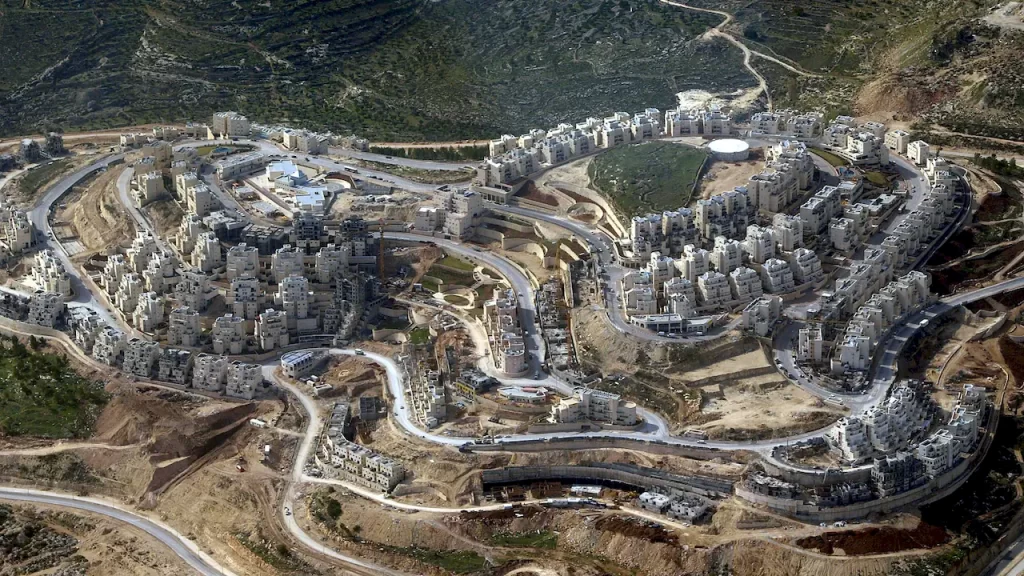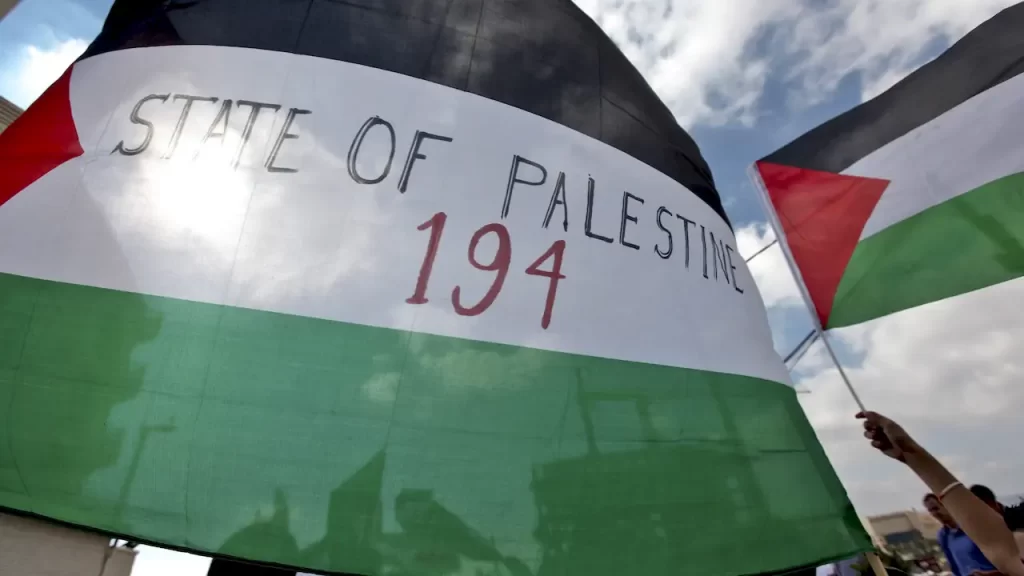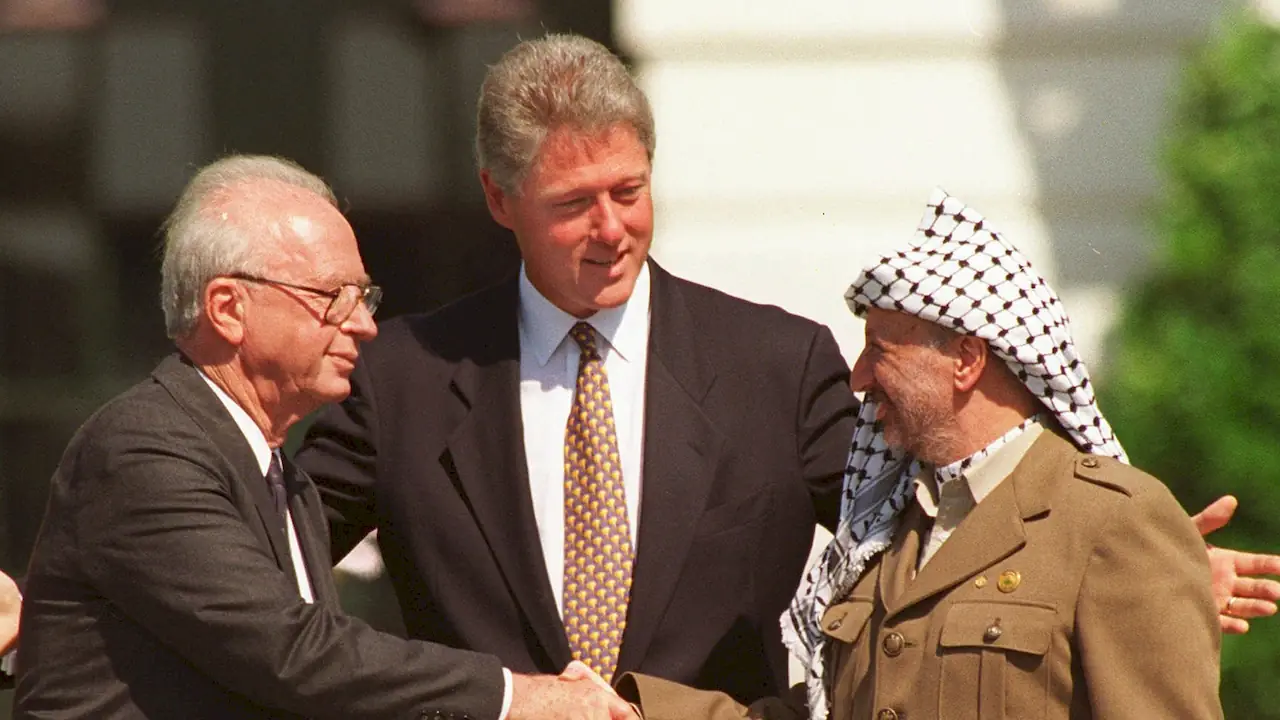In recent weeks, Israeli Prime Minister Benjamin Netanyahu has repeated his rejections of a two-state solution to the Israeli-Palestinian crisis, saying:
While Netanyahu has never been in favour of a two-state solution, it has had significant support from governments around the world for decades, including the United States, the United Kingdom, European nations, Australia, Canada, Egypt and others.
However, the two-state solution is now further away than it has ever been, with some even proclaiming it “dead”.
But what actually is the two-state solution and why do so many see this as the only resolution to the conflict?
What is the two-state solution?
The two-state solution refers to a plan to create a Palestinian state separate from the state of Israel. The goal is to address Palestinian claims to national self-determination without undermining Israel’s sovereignty.
The first attempt at creating side-by-side states occurred before the independence of Israel in 1948. The year before, the United Nations passed Resolution 181 outlining a partition plan that would split the Mandate of Palestine (under British control) into separate Jewish and Arab states.
The UN’s proposed borders never materialised. Shortly after Israel declared independence, Syria, Jordan and Egypt invaded, sparking the first Arab-Israeli war. More than 700,000 Palestinians were displaced from the new state of Israel, fleeing to the West Bank, Gaza and surrounding Arab states.

Why is statehood so important?
The kind of statehood referred to in the two-state solution, known as state sovereignty in international politics, is the authority given to the government of a nation within and over its borders.
State sovereignty was formalised through the League of Nations (the precursor to the UN) and it gives governments complete control to administer laws within their borders, allows them to conduct relations with other states in formal bodies, and protects them from invasion by other states under international law. This status is derived from mutual recognition from other states.
This is something many of us take for granted. The vast majority of people on Earth live in or legally fall under the jurisdiction of a sovereign state.
The state of Israel was formally established in 1948 through the political project of Zionism – the movement to establish a Jewish homeland. The aim was to create a sovereign state – with borders, a government and an army – that would give the Jewish people a political voice and a place free from antisemitic violence.
But it was not until other countries established diplomatic ties with Israel – along with its accession to the UN in 1949 – that it achieved state sovereignty similar to other countries. More than 160 members of the UN now recognise Israel; those who do not include Syria, Iran, Saudi Arabia, Malaysia and Indonesia.
Since the end of the Six-Day War in 1967, more than 5 million Palestinians who are not citizens of another nation have been stateless. The West Bank and Gaza Strip remain in an institutional limbo – best described as semi-autonomous enclaves under the ultimate control of Israel.
While 139 members of the UN recognise a state of Palestine, the governing bodies in the West Bank and Gaza (the Palestinian Authority and Hamas, respectively) do not have control over their own security or borders.
As such, the self-determination of Palestinians through the creation of a sovereign state has been a cornerstone of Palestinian political action for decades.

The closest the two sides got – the Oslo Accords
For a time in the early 1990s, significant progress was being made toward a two-state solution. Negotiations began largely as a result of Palestinian uprisings across the West Bank and Gaza. Beginning in 1987, they were known as the First Intifada.
In 1993, Israeli Prime Minister Yitzhak Rabin and the head of the Palestinian Liberation Organisation (PLO) Yasser Arafat met in Oslo and signed the first of two agreements called the Oslo Accords. At the time, this was not seen as a meeting between equals. Rabin was head of a sovereign state and Arafat was leader of an organisation that had been designated a terror group by the US.
But the leaders were able to formalise an agreement, following major concessions from both sides, that laid the groundwork for the creation of a separate Palestinian state. While the accord did not expressly mention the 1967 borders, it did refer to “a settlement based on UN Security Council Resolution 242” in 1967, which called for the withdrawal of Israel’s armed forces “from territories occupied in the recent conflict”. Arafat, Rabin and Israeli Foreign Minister Shimon Peres all received Nobel Peace Prizes afterwards.
The Oslo II Accord was signed in 1995, detailing the subdivision of administrative areas in the occupied territories. The West Bank, in particular, was divided into parcels that were controlled by Israel, the Palestinian Authority or a joint operation – the first step toward handing over land in the occupied territories to the Palestinian Authority.
But just six weeks later, Rabin was shot dead by a Jewish nationalist aggrieved by the concessions made by Israel.
Negotiations between the two sides slowed and political will began to sour. And over the next few decades, the two-state solution has only become harder to achieve for various reasons, including:
- The rise of conservative governments in Israel and lack of effective political pressure from the US
- The shrinking political influence of the Palestinian Authority under Mahmoud Abbas and the rise of Hamas in Gaza, which caused a political split between the two Palestinian territories
- Hamas’ vows to annihilate Israel and refusal to recognise the Israeli state as legitimate
- The continued growth of Israeli settlements in the West Bank, which has turned the territory into an ever-shrinking series of small enclaves connected by military checkpoints
- Dwindling support among both Israelis and Palestinians for the model
- Continued political violence on both sides.
And of course there is Netanyahu – no individual has done more to undermine the two-state solution than the current Israeli leader and his party. In 2010, a leaked recording from 2001 came to light where Netanyahu claimed to have “de facto put an end to the Oslo accords”.
What alternatives are there?
There aren’t many alternatives and all of them have significant problems.
Some are now advocating for a “one-state solution,” in which Israeli citizenship would be granted to Palestinians in the West Bank and Gaza to create a democratic, ethnically pluralist state.
Although Arabs already make up around 20% of Israel’s current population, the one-state solution would not be politically feasible. According to Zionist ideology, Israel must always remain a majority Jewish state and granting Palestinians citizenship in the occupied territories would undermine this.
Another kind of one-state solution is not feasible for a different reason. The most far-right ministers in Israel’s parliament have championed an idea to expand complete sovereign control over the West Bank and Gaza and encourage mass Jewish settlement in these areas. Such action would draw the ire of the international community and human rights organisations and would be seen as tantamount to ethnic cleansing.
The other option is the status quo. The Hamas attack on October 7 and subsequent Israeli assault on Gaza have shown us that this is not a solution either.
This report is given by The Conservation The Sen Times holds no responsibility for its content.

